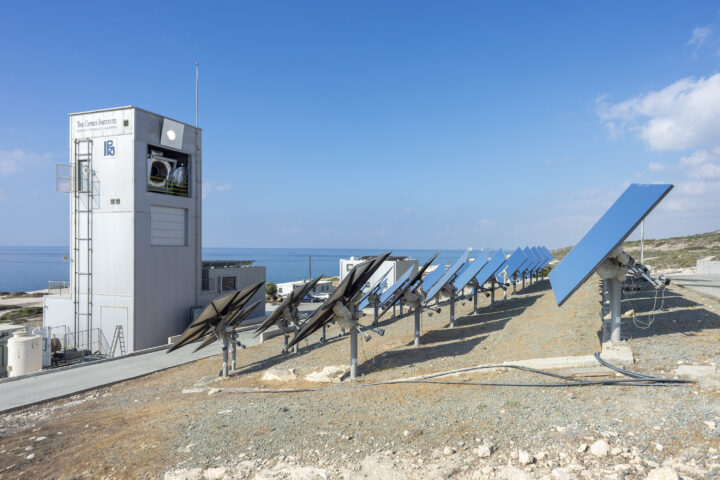Cyprus’ economic activity contracted sharply in 2020 due to the COVID-19 crisis, albeit less than the EU average, but a 3.1% GDP rebound is expected this year, according to the EU Commission spring forecast.
The tourism sector has been severely affected, while temporary income support measures cushion domestic demand and the labour market.
Gradual recovery in economic activity is forecast for 2021 and 2022, driven mainly by domestic demand.
Public finances worsened significantly in 2020 due to the crisis but are set to improve in 2021 and 2022; these are the main findings of the spring economic forecast for Cyprus.
The report notes that public finances deteriorated significantly in 2020 due to the crisis but are expected to improve in 2021 and 2022.
The Commission recorded a recession of 5.1% in 2020 but GDP growth of 3.1% and 3.8%, respectively, for 2021 and 2022.
Unemployment was 7.6% in 2020, 7.5% in 2021 and 7.2% in 2022, inflation -1.1% in 2020, 1.7% in 2021 and 1.1% in 2022, public debt 118.2% (GDP) in 2020, 112.2 in 2021 and 106.6% in 2022, the deficit was -5.7% , -5.1% and -2.0% for 2020, 2021 and 2022 respectively.
Economic activity declined due to the COVID-19 crisis and accompanying lockdown measures.
Domestic demand has been only partially mitigated by the temporary income support measures as private consumption fell by 3.9% in 2020 and investment by 2%.
Exports of goods and services dropped by 12.4%, the latter reflecting the impact of travel restrictions on tourism.
Lockdown measures in Cyprus during the first half of 2021 and ongoing restrictive measures in the rest of the EU affecting tourism flows imply that a durable recovery is expected to occur in the second half of 2021.
Domestic demand is expected to be the main driver of the recovery, notably private consumption due to pent-up demand.
Investment in construction is also expected to rebound as large-scale infrastructure projects continue, and new lending for housing has picked up since the third quarter of 2020.
By contrast, demand for high-end residences is set to slow down following the abolition of the investor citizenship scheme.
The forecast for public investment in 2021 considers Cyprus’ Recovery and Resilience Plan (RRP), which will start to have a gradual impact this year.
Public consumption is expected to positively contribute to some of the support measures extended into 2021 and the planned increases in employee compensation.
External demand for tourism is forecast to recover moderately, as Member States are still tackling the pandemic and facing further restrictive measures likely to impact the summer tourist season adversely.
In 2022, real GDP is forecast to grow by 3.8% and exceed the output level of 2019.
It will be mainly due to rising domestic demand, including the positive contribution of the RRP and a small positive contribution from net exports.
The unemployment rate increased only mildly to 7.6% in 2020 from 7.1% in 2019.
The broad utilisation of the temporary income support schemes – up to 65% of eligible employees – has helped keep unemployment at low levels.
Targeted measures to sectors mostly affected by lockdown measures, especially the hospitality industry, continue.
In 2021 the unemployment rate is forecast to decrease only marginally to 7.5% and slip further to 7.2% next year.
Uncertainty and downside risks to the growth outlook remain significant.
“The sizeable pre-existing private and public sector debt levels exacerbate the downside risks.
“On the positive side, the swifter-than-expected vaccination campaigns in the EU could be a significant benefit for the tourism sector in Cyprus,” said the report.
Inflation to reach 1.7%
Headline inflation is forecast to return to positive territory in 2021, at 1.7%, up from -1.1% in 2019.
This is expected to be mainly driven by higher energy prices and higher prices of services and non-energy industrial goods. Inflation is expected to moderate to 1.1% in 2022.
The general government deficit is expected to narrow to 5.1% of GDP in 2021, down from 5.7% in 2020.
“Additional support measures undertaken to mitigate the effects of the pandemic, supporting employment and businesses, should amount to 3.4% of GDP in 2021.”
The deficit is assumed to narrow further to 2% of GDP in 2022 on the back of the continuing recovery of the economy and the withdrawal of COVID-19 support measures projected to reach 0.2% of GDP.
From a peak at 118.2% of GDP in 2020, government debt is forecast to decrease to 112.2% in 2021, reflecting the drawing down of substantial cash buffers accumulated since the beginning of the pandemic.
In 2022, the debt ratio is expected to decrease further to 106.6% of GDP.
Government expenditure is expected to increase by 7.2% in 2021 compared to the previous year and reach 47.4% of GDP before dropping by 2.8% in 2022.
This increase results mainly from the prolongation of COVID-19 related support measures and the rollout of the second phase of the National Health Insurance System (NHIS) reform.
In 2021, the total budgetary impact of reforms and investments entailed in the Plan amounts to 0.3% of GDP.
Government revenue is expected to grow by 9.1% in 2021, bringing its level to 42.3% of GDP.
“This increase is mainly driven by the economic recovery, higher expected tax collection, and increased social contributions explained by higher contribution rates to the NHIS.
“Government revenue in 2022 is forecast to increase by a milder 3.8% y-o-y.”
The report said contingent liabilities related to the state’s exposure to the financial sector and the NHS are the main risks to public finances.
“Bankruptcies and higher NPLs could lead to the realisation of explicit contingent liabilities.
“The financial autonomisation of the State Health Service Organisation (SHSO) has been impaired due to the pandemic, increasing the risk that the state may have to cover the losses of public healthcare providers.”









